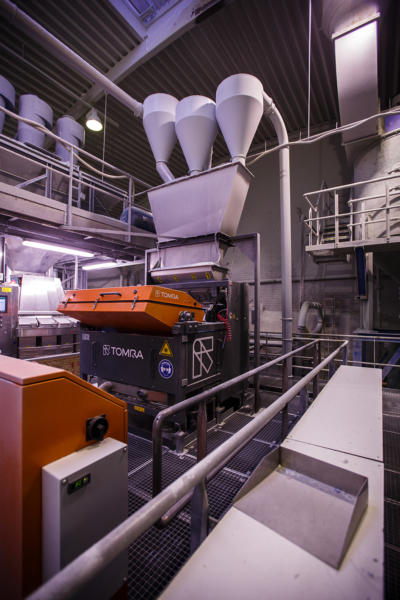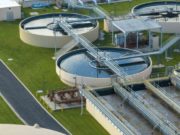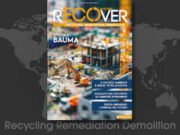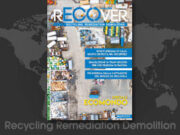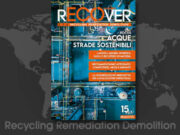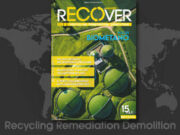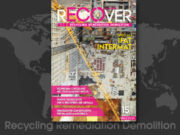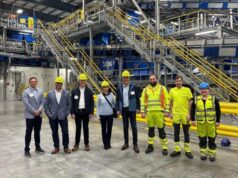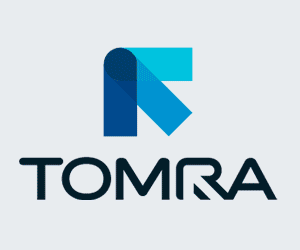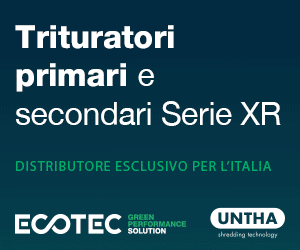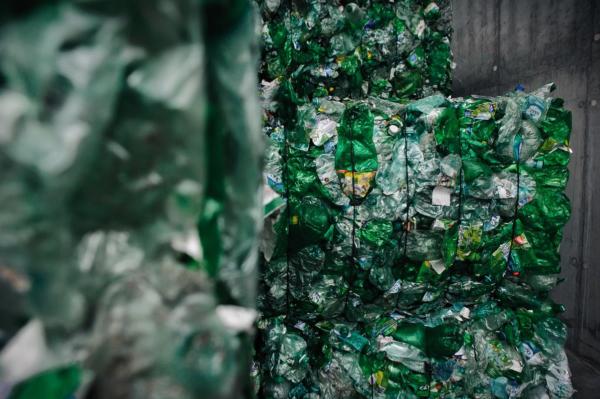
By Alberto Piovesan, Segment Manager Plastics at TOMRA Recycling
Brand owners and packaging converters in the plastics industry are facing major bottlenecks in recycled content availability. To overcome this challenge and meet ambitious recycling targets, recyclers and material sorting facilities (MRFs) are using advanced technologies to produce feedstock for high-grade applications, expanding their business opportunities.
As legislation continues to push for a reduction in plastic waste, the demand for high-quality recycled plastics are at a record high. Plastics are durable, efficient, and convenient, which makes them hugely beneficial to consumers and businesses alike. Making plastic products and packaging more sustainable is the challenge of our time. As brand owners look to increase the share of recycled content to reduce their production emissions and satisfy consumer demands, they are met with a new set of challenges. High-grade applications like automotive and packaging require high-quality recycling processes and advanced sorting technologies to effectively source feedstock from post-consumer and post-industrial plastic waste.
Demand vs. recycled content availability
In 2020, worldwide plastic production amounted to 367 million metric tons (mt). Europe produced 55 mt of plastic, with 70% of the total market demand coming from the largest countries, using 40.5% of the material for packaging production. In the quest to create a circular economy for plastics, the share of virgin material in manufacturing should be reduced and replaced by secondary raw materials. this, however, is easier said than done.
Plastic recycling has certainly had its share of bad publicity, not least due to downcycling – after all, there is a limited demand for items such as park benches, flowerpots and speed bumps. But The recycling industry, working in collaboration with members of plastic value chains, has now made it possible to create virgin-like recycled content with advanced mechanical recycling. Not only does this prove to be an economically feasible and practical alternative to primary materials, it also gives recyclers and MRFs the opportunity to create new revenue streams. Even in the case of highly contaminated plastic waste streams, like municipal solid waste (MSW), it is now possible to source quality feedstock that can be used to create new products.
The S&P Global Platts Analytics predicts that by 2030 more than 1.7 million metric tons of virgin polymers will be replaced by mechanically recycled plastics – compared to 688,000 mt in 2020. To date, only a tiny portion of recyclates have found their way into the production of new materials. Most of the recyclates are used for lower-grade applications. So, how can industries such as automotive, food and beverage, and cosmetics ensure a reliable supply of high-quality recycled feedstock? Bridging the gap of material shortages starts with effective collection of recyclables. Deposit Return Systems (DRS), for instance, are a global best practice for the recycling of beverage containers in a closed-loop system. There is not a one-size-fits-all solution: to achieve circularity, complementary solutions are needed to capture other products made of plastic, like post-consumer film packaging. Mitigating contamination and increasing the quantities of recovered recyclates across all waste streams is crucial to the future of plastics.
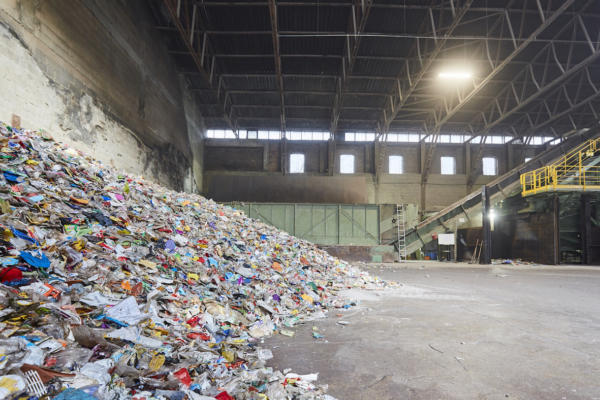
New developments in legislation
A harmonized approach is required to enable greater plastics circularity and provide a long-term supply of recycled content for the market to reduce dependency on primary materials. For instance, many countries consider or already introduced Extended Producer Responsibility Schemes (EPR), which give producers significant responsibility for the product’s lifecycle – from design to the post-consumer stage of its lifecycle. These policies incentivize producers to consider environmental factors when manufacturing packaging and to contribute to a reduction of the products’ environmental impact. Legislation plays a fundamental role in supporting infrastructure investment, including effective collection, sorting, and recycling of plastic waste. Plastic directives and mandatory recycled content targets can establish the proper framework for prioritizing circularity and breaking the bottleneck of feedstock recovery.
Binding frameworks constitute a major and necessary intervention in the market. They support sustainable waste management and stimulate the industry to increase the use of recyclates while securing demand and infrastructure investment. The Plastic Packaging and Packaging Waste Directive, introduced by the European Union in 1994, is among the legislation that defines recycled content targets, creating end markets for secondary raw materials. The directive makes it mandatory for packaging producers to use at least 50% recycled content in the production of new plastic packaging by 2025 and more than 55% by 2030. In 2021, the EU introduced a Single-Use Plastics Directive requiring a minimum of 25% of recycled content in PET bottles by 2025 and a separate collection target of 77%. Countries with DRSs are a best practice: Germany achieves a 98% collection rate for PET and the Netherlands follows closely with 95%.
As much as it seems that we are headed towards a circular economy, we have a long way to go. According to Zero Waste Europe, new bottles only contain 17% of recycled PET (rPET), on average. Meanwhile, 69% of other PET products are made with rPET from beverage bottles – diverting materials from the intended closed-loop process. Ideally, plastic materials should be recycled multiple times in the same application to ensure adequate supply for production for as long as economically feasible.
Directives are a decisive step forward, but there is still room for improvement. For instance, there is little legislation specifying the use of post-consumer recycled content (PCR) that could fill the gap between demand and supply. In the USA, the state of California leads the most ambitious targets for PCR in beverage bottles. The recently established California Recycled Content Laws set PCR targets at 15% by 2022, 25% by 2025, and 50% by 2030.
Advanced mechanical recycling and collaboration along the value chain
Increasing the use of recycled content requires the entire industry to take action, design recyclable packaging, and improve the supply of quality recyclates with both new and existing instruments. Applying the Holistic Resource Systems approach to waste management combines deposit return systems (DRS), separate collections for selected material streams, and mixed waste sorting to recover plastics for advanced mechanical recycling.
Beyond dedicated collection streams, the addition of mixed waste sorting is also proving to deliver high-quality plastic for recycling. A case study with AVR, a residual waste sorting plant in the Netherlands, demonstrated that mixed waste sorting with high-performing technologies can capture 12 times more plastics for recycling, cutting down on CO2 emissions. Other sorting facilities, such as the Norwegian companies IVAR IKS or ROAF, also demonstrate the enormous potential that mixed waste sorting offers if municipalities and businesses invest in advanced technologies and processes.
Today, recyclers and sorting plant operators are faced with the task of cleaning contaminated waste to a level suitable for further processing or local trading. At the same time, brand owners and converters that buy PCR are demanding high-purity mono fractions, sorted by polymer type and colors. By adopting new sensor-based sorting technology, plant operators can effectively sort and purify high-value plastics from waste streams to supply PET or PO fractions to the market. To create more valuable products, a combination of pre-sorting and flake sorting solutions is needed. First, near-infrared (NIR) sorters separate targeted plastics from contaminants such as unwanted polymers and foreign materials. The purified plastics are then shredded, washed, and dried. The resulting plastic flakes are then processed in a secondary step with a high-precision flake sorting system that can sort flakes as small as 2mm. These ultra-flexible systems enable operators to define whether they’d like to sort materials by polymer type and/or color, creating products specifically tailored to even the most demanding requirements. The outstanding technology featured in these systems can sort a vast range of colors, including the highly demanded natural, clear, and light blue flakes, as well as all bright colors, while ensuring maximum polymer purity. Thus, operators are given the means to minimize contamination levels and supply the industry with high-quality materials they can process into virgin-like recyclates.
While most recyclers prefer plastics coming from single material streams with lower contamination levels, operators can source more materials to meet demand by ‘cleaning’ plastics of impurities. Post-consumer packaging waste, for instance, can be an excellent source of recyclable polymers and is available in large quantities. Although more contaminated compared to post-industrial plastic waste, sophisticated sorting systems can automatically recover and purify the materials by utilizing advanced mechanical recycling processes. This too would increase the availability of PCR material on the market.
Collaboration is key in plastic recycling. Improving recyclability and increasing the quantity of recycled content demands that industry go upstream because high-quality recycling begins in the design phase. Brand owners are incentivized to implement design-for-recycling to help facilitate the sorting process. The more complex and colorful the design of a product is, the more difficult it is to sort and recycle. Thus, to maximize resource recovery, product design, sorting technology, and the overall process must complement each other. With all methods, from the product’s design to its end-of-life-management going hand in hand, it is evident that change does not come from a single actor in the value chain – to innovate and transform the industry, everyone must play their part.
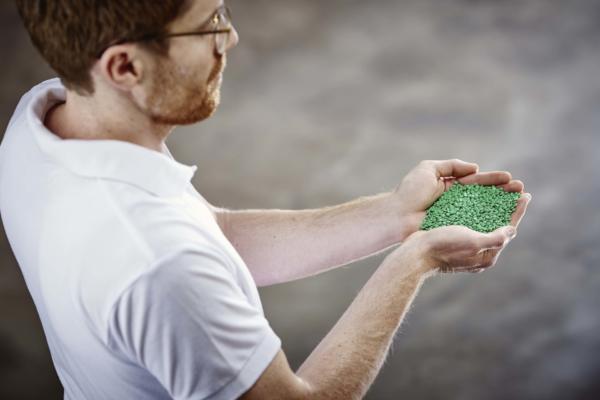
Benefits
The recycling sector offers tremendous potential, but limited recycled content availability, low-quality recyclates, and a lack of financial incentives impair its evolution. Legislation and consumer awareness signal that it is time to reduce waste and make recycling a priority. Highly efficient sorting processes that enable MRFs, and recyclers to create high-purity mono fractions from even the most contaminated waste streams, will ensure a long-term supply of recycled content. As part of the roadmap to the circularity of plastics, the capability to create virgin-like recycled content opens new revenue streams for sorting facilities and recyclers while reinforcing local trading. Using sensor-based sorting technologies provides an economic advantage to the entire plastics value chain.
TOMRA Recycling
TOMRA Recycling designs and manufactures sensor-based sorting technologies for the recycling and waste management industry. More than 8,200 systems are installed in 100 countries around the world.
Responsible for the development of the world’s first infrared sensor for waste recycling applications, TOMRA Recycling is a pioneer in the field and through its sensors recovers high-purity fractions from the waste stream that maximize yield and customer benefits.
TOMRA Recycling is part of TOMRA Sorting Solutions, which develops sensor-based sorting and process control systems for the food, mining and other industries. TOMRA Sorting is owned by Norway’s TOMRA Systems ASA, which was founded in 1972 and is publicly listed on the Oslo Stock Exchange. The Group employs ~4,600 people globally and had total revenues of ~1.1B Euro in 2021.
